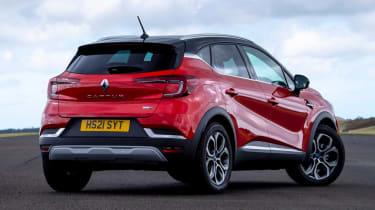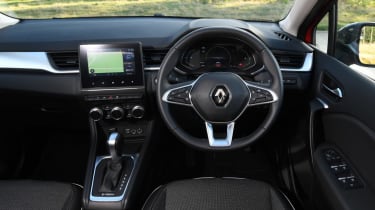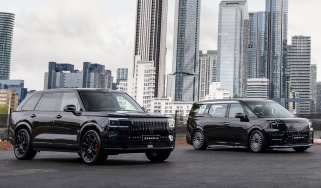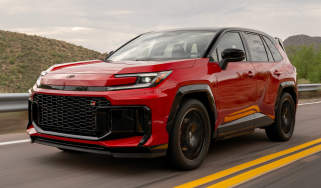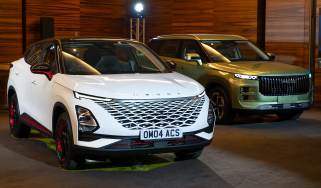Used Renault Captur (Mk2, 2020-date) review: a popular Ford Puma and Nissan Juke rival
A full used buyer’s guide on the Renault Captur covering the Capur Mk2 that’s been on sale since 2020
Verdict
Renault got off to a good start with the original Captur, and with the second take on the formula, this ultra-compact SUV only became more appealing. It’s no wonder it’s Renault’s most popular car, with its smart exterior design, high-quality cabin and impressive powertrains. When we pitched the Captur against a Honda HR-V and SEAT Arona, the French car came out on top. The Renault repeated the feat when we tested it against the Hyundai Bayon and the Citroen C3 Aircross, while the Captur beat the Ford Puma and the Peugeot 2008 in another group test.
It’s fair to say that of all the small SUVs that you can choose from, we can recommend the Renault Captur very highly, which is why it was our 2021 Small SUV of the Year.
There was a time when SUVs were big, bulky and rather cumbersome for British roads, but over the years the choice of Sports Utility Vehicles got much bigger as some of those choices got much smaller.
The smallest is the B-segment SUV, which is the size of a supermini, but with a raised ride height for better forward visibility, as well as easier entry and exit. The first of these micro-SUVs was the Nissan Juke, which arrived in 2010, and it was only a matter of time before Renault introduced its own take on the formula, because the French brand is allied to the Japanese one.
Used - available now

2019 Renault
Captur
50,159 milesManualPetrol1.3L
Cash £9,095
2022 Renault
Captur
13,826 milesAutomaticPetrol1.6L
Cash £17,500
2022 Renault
Captur
38,375 milesManualPetrol1.0L
Cash £12,649
2013 Renault
Captur
96,000 milesAutomaticDiesel1.5L
Cash £5,995Sure enough, the original Renault Captur arrived in 2013 and proved a big hit – and its successor is even more desirable.
History
The Captur Mk2 went on sale in March 2020 with three-cylinder 1.0-litre and four-cylinder 1.3-litre petrol engines, the former rated at 99bhp (TCe 100) and the latter at either 128bhp (TCe 130) or 153bhp (TCe 155). Diesel fans could choose between 94bhp and 114bhp versions of a 1.5 dCi engine.
Only Play, Iconic and S Edition trim levels were offered when the second-generation Captur was launched, but in August 2020 the SE Limited and R.S. Line were added. Three months later the Captur E-Tech plug-in hybrid appeared, then in August 2021 the Captur E-Tech mild hybrid was launched; both cars were fitted with a 1.6-litre petrol engine.
Renault revised the Captur line-up at the end of 2021, with the range now comprising Evolution, Techno and R.S. Line trims, while the E-Tech engine’s output was boosted from 138bhp to 143bhp.
Which one should I buy?
All engines are perky, but moving up from the entry-level petrol or diesel engines brings noticeable performance benefits.
All transmissions are pleasant to use, but we’d avoid Play trim, because it’s relatively basic, although standard kit does include cruise control, LED headlights, electric windows front and rear, climate control and a seven-inch touchscreen with DAB and Bluetooth connectivity. Moving up to the mid-range Iconic (later the Evolution) brings rear parking sensors, 17-inch alloy wheels, two-tone paint, satellite navigation, plus Android Auto and Apple CarPlay.
The SE Edition (later renamed Techno) adds front parking sensors and a rear-view camera, part-synthetic leather trim, a nine-inch display and wireless phone charging. Also fitted are blind-spot warning, high-beam assist and an auto-dipping rear-view mirror.
Alternatives to the Renault Capture
The Nissan Juke looks distinctive and offers decent value, plus it’s good to drive. The Volkswagen Group has the SEAT Arona, Skoda Kamiq and VW T-Cross, which offer great engines, user-friendly cabins and impressive build quality. The well equipped Kia Stonic and Hyundai Kona are reliable, plus they have a generous warranty.
The Ford Puma is one of our favourite micro-SUVs, because it’s so good to drive, excellent value and very practical. If comfort is a priority, check the distinctive Citroen C3 Aircross, which comes with some impressive engines. The Peugeot 2008 has a great interior and looks fantastic, while the Mazda CX-3’s cabin has a premium feel. It’s great to drive and it looks good, too.
What to look for
Electrification
The Captur E-Tech came in hybrid and PHEV forms. The former had a 1.2kWh battery; the latter’s was 9.8kWh.
Spare wheel
Capturs came with a tyre mobility kit, but spare wheels are available via thewheelshop.co.uk. They cost from £100, including tools.
Problems
Software glitches are the most common problem. The trip computer, display brightness and tyre- pressure monitoring can reset themselves.
Vibrations
Some E-Tech PHEV owners have experienced vibrations that disappear above 20mph. It’s not known if the fault is electronic or mechanical.
Interior
You can forget the fragile Renault interiors of the past, because the Captur’s cabin exudes quality. There are plenty of high-quality materials and soft-touch plastics throughout, the infotainment systems work really well, and the optional digital instrumentation is impressive.
The amount of cabin space also impresses, and versatility is excellent, thanks to the sliding rear seat. It’s not as though the pay-off for this flexibility is a shortage of boot space, because it’s big enough, at 404-536 litres. With the back seats folded, there’s an even more useful 1,275 litres of carrying capacity at your disposal.
Prices
Most Capturs have a petrol engine, but hybrids and plug-in hybrids each account for about one in 10 of the cars available. Meanwhile, automatics account for almost half of the Capturs for sale.
To check prices on a specific model head over to our valuation tool.
Running costs
All Capturs need to be serviced every 12 months or 18,000 miles. Maintenance alternates between Minor and Major, which are in effect an inspection and then an oil and filter change. The two services are priced at £159 and £249, and they can be combined into a £345 job for high-mileage drivers. However, by the time a Captur has had its third birthday, it’s then eligible for cut-price maintenance at some dealers.
From this point on, more comprehensive services are offered, billed as Essential (at £129) and Full (at £179). The former is in effect an oil and filter change with an inspection; the latter includes a few extra replacement parts. The brake fluid has to be renewed (at £85-£102) every three years or 72,000 miles. While the engines don’t have cambelts, the diesel has an accessory belt that needs to be replaced every six years or 80,000 miles, at a cost of around £400.
Recalls
While the original Captur was recalled on six occasions, for problems as diverse as poorly manufactured front- wheel hubs, faulty headlights, and seatbelt buckles working loose, the second-generation Captur has been recalled just the once so far. The campaign was launched in May 2020 and it affected just 22 examples built in August and September 2019.
These were fitted with a panoramic glass roof that could detach as the car was driven, because of faulty bonding. The solution was to replace the roof altogether, with a new one bonded into place. Renault UK has an online recall checker in place at renault.co.uk/recall-campaigns.html. Enter a car’s Vehicle Identification Number (VIN) and it’ll tell you if a car that you’re thinking of buying is subject to any outstanding campaigns.
Driver Power owner satisfaction
The Captur Mk2 made its Driver Power New Car survey debut in 2021, when it came 37th out of 75 cars. It then came 31st in 2022 and 34th in 2023. Looking at the 2023 result, 17th for reliability is encouraging, as is ninth for infotainment. The interior quality scoops 12th and driving pleasure is 16th. But 67th for safety features is worrying, and 48th for servicing costs is also disappointing.



